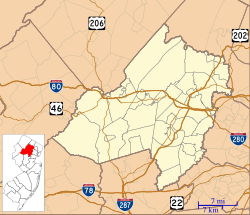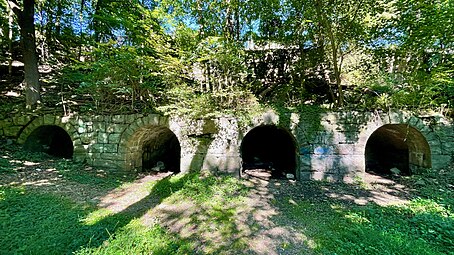Arch Bridge from the Boonton Ironworks | |
 | |
| Location | Grace Lord Park Boonton, New Jersey |
|---|---|
| Coordinates | 40°54′23.4″N74°24′57.6″W / 40.906500°N 74.416000°W |
| Built | 1866 |
| Built by | John Carson Sr. |
| Part of | Boonton Ironworks Historic District (ID100009115) |
| NRHP reference No. | 100008042 [1] [2] |
| NJRHP No. | 5620 [3] |
| Significant dates | |
| Added to NRHP | September 1, 2022 |
| Designated CP | July 14, 2023 |
| Designated NJRHP | July 8, 2022 |
The Arch Bridge from the Boonton Ironworks crosses the Rockaway River in Grace Lord Park in the town of Boonton in Morris County, New Jersey. The single-span fieldstone arch bridge was built by John Carson Sr. in 1866 to carry a water pipe to the ironworks. It was added to the National Register of Historic Places on September 1, 2022, for its significance in engineering. It is currently used as a pedestrian bridge. [4]





